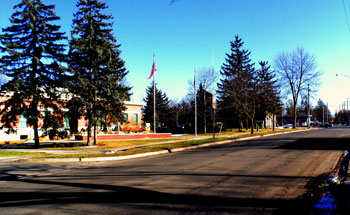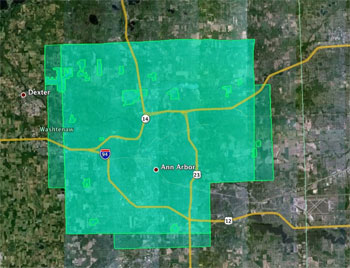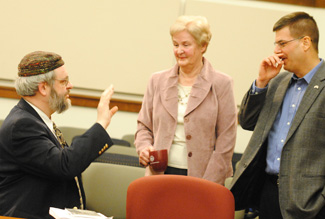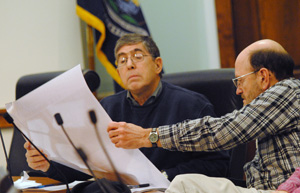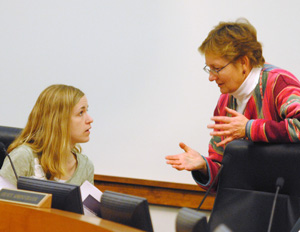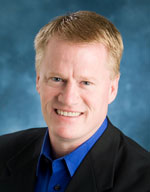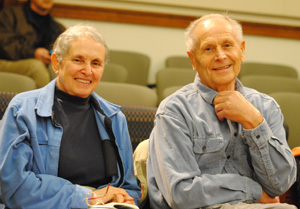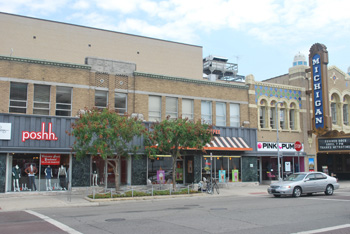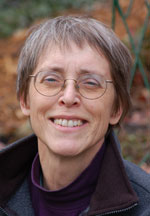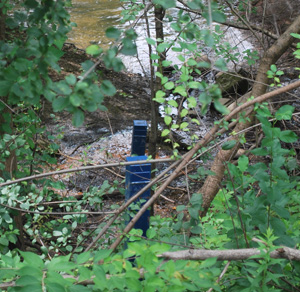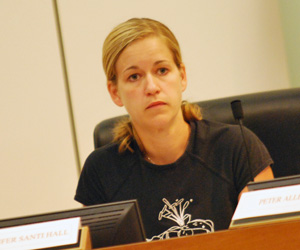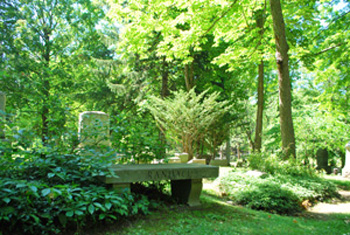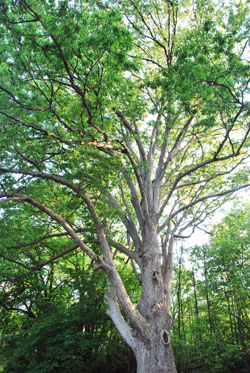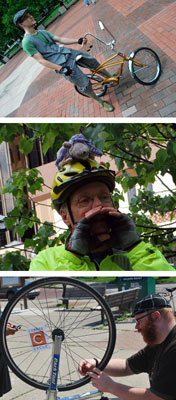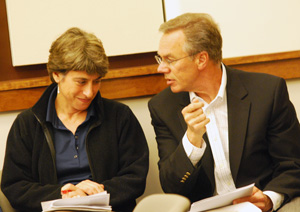Greenbelt, County Look to Partner on Farms
Ann Arbor greenbelt advisory commission meeting (March 9, 2011): Changes to Washtenaw County’s natural areas preservation program (NAPP) now allow the county to buy development rights for farmland – a land preservation strategy also pursued by Ann Arbor’s greenbelt program.
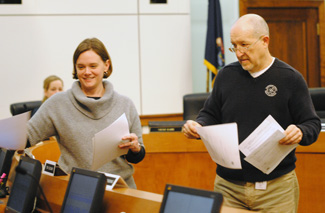
Tom Freeman, deputy director of Washtenaw County parks & recreation, and Ginny Trocchio of The Conservation Fund distribute handouts to the Ann Arbor greenbelt advisory commission at GAC's March 9, 2011 meeting. (Photos by the writer.)
Tom Freeman, deputy director for the county’s parks & recreation department, gave commissioners an update on this new aspect of NAPP, which is funded by a 10-year millage that voters renewed in November 2010. He discussed with commissioners areas of overlap between the two programs, and the potential for future partnerships as NAPP’s farmland protection efforts ramp up.
Prompted by a question from GAC chair Jennifer S. Hall, Freeman also updated commissioners about the county’s plans to apply for a grant from the Michigan Dept. of Natural Resources Trust Fund. The grant would help the county buy a parcel in Ann Arbor Township now owned by a subsidiary of Domino’s Farms. The land, which has water and sewer hookups that make it prime for development, is near three other parcels of already preserved property: the county’s Goodrich Preserve; the University of Michigan’s Horner-McLaughlin Woods; and the city-owned Marshall Nature Area. Freeman explained some complicating factors in the acquisition, including two widely divergent appraisals – for $1.9 million and $3.25 million – and the fact that the land is at the center of ongoing litigation between the township and the landowner.
When Hall floated the idea that the greenbelt commission could send a letter of support for the county’s application, Carsten Hohnke cautioned against it. Hohnke, who serves on both GAC and city council, said the city also plans to apply to the trust fund for two projects. [He didn't identify the projects during the meeting. In a follow-up email to The Chronicle, Colin Smith, the city's parks & recreation manager, reported that the applications would be for a skatepark and upgrades to the Gallup canoe livery and park.]
Hohnke felt the county’s application could dilute the city’s chances for success, though it was pointed out to him that the county and city would be applying to two separate pools of funding – the county plans to ask for a grant available for land acquisitions, while the city’s projects are in the category of project development grants. Ultimately, commissioners voted to recommend that the city council consider sending a letter of support for the county’s application. Councilmembers would need to act at their next regular meeting on March 21 – the deadline to apply is April 1.
Also at GAC’s March 9 meeting, commissioner Tom Bloomer – who owns Bur Oaks Farm in Webster Township – reported on a plan to eliminate state tax credits for farmers. It’s part of a broader budget proposal by Gov. Rick Snyder to cut many of the tax incentives currently offered by the state – the most high profile of which is for the film industry. Eliminating the credits for farming could make it unprofitable to farm in this area, Bloomer said. [Full Story]





